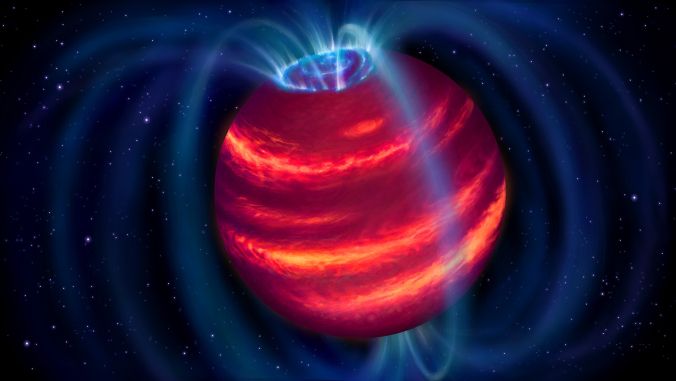Faint 'super-planet' discovered by radio telescope for the 1st time
There are more to come.

Scientists have discovered a cold, faint "super-planet" that has remained elusive to traditional infrared survey methods.
Observations from the Low-Frequency Array, or LOFAR radio telescope, revealed a brown dwarf, which researchers have designated BDR J1750+3809 and nicknamed Elegast. Brown dwarfs are sometimes referred to as failed stars or super-planets because they are too small to be considered stars, yet too big to be considered planets.
Generally, brown dwarfs are discovered by infrared sky surveys. Elegast, however, represents the first substellar object to be detected using a radio telescope, according to a statement from the University of Hawai'i.
Related: Brown dwarfs: Strange failed stars of the universe explained (infographic)
"This work opens a whole new method to finding the coldest objects floating in the sun's vicinity, which would otherwise be too faint to discover with the methods used for the past 25 years," Michael Liu, coauthor of the study and researcher from the the University of Hawai'i Institute for Astronomy, said in the statement.
Since brown dwarfs are too small to become stars, they don't undergo the same nuclear fusion reactions that fuel bright stars, like our sun. Therefore, they are smaller, dimmer, and colder than normal stars, making them harder to find using conventional methods, such as infrared instruments. However, brown dwarfs can emit light at radio wavelengths.
The researchers first discovered Elegast using the LOFAR radio telescope based in the Netherlands. Their observations were then later confirmed using the International Gemini Observatory in Hawaii and Chile and the NASA Infrared Telescope Facility, which is operated by the University of Hawaiʻi.
Sign up for the Live Science daily newsletter now
Get the world’s most fascinating discoveries delivered straight to your inbox.
"We asked ourselves, 'Why point our radio telescope at catalogued brown dwarfs?'" Harish Vedantham, lead author of the study and astronomer from the Netherlands Institute for Radio Astronomy (ASTRON), said in the statement. "Let's just make a large image of the sky and discover these objects directly in the radio."
Using the LOFAR instrument to detect Elegast represents an innovative approach that could help scientists discover other celestial objects, such as gas giant exoplanets, that are too cold or faint to be detected by infrared surveys, according to the statement.
The new research was published Nov. 9 in the Astrophysical Journal Letters.
Follow Samantha Mathewson @Sam_Ashley13. Follow us on Twitter @Spacedotcom and on Facebook.










